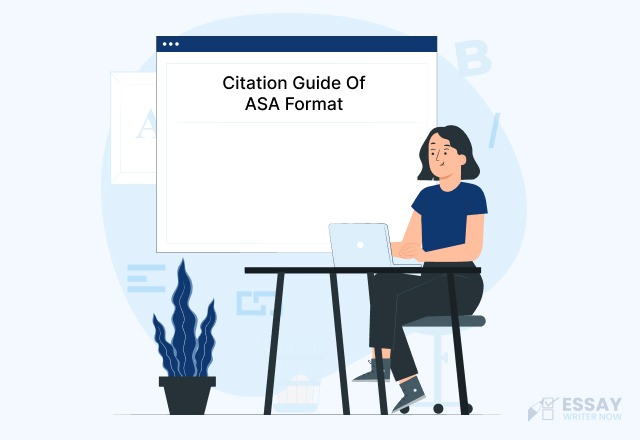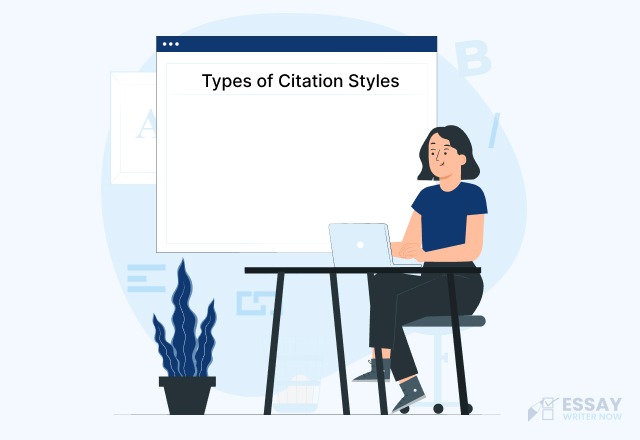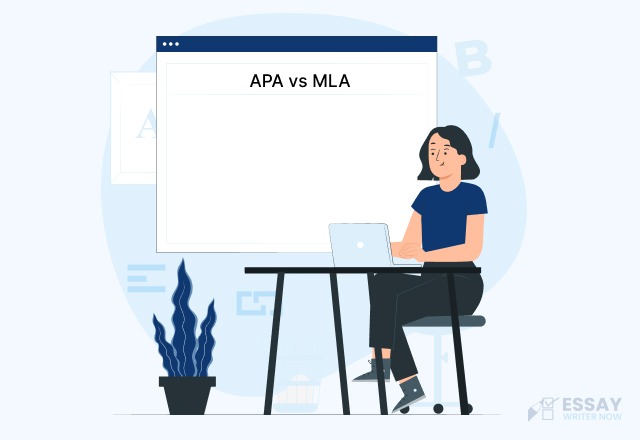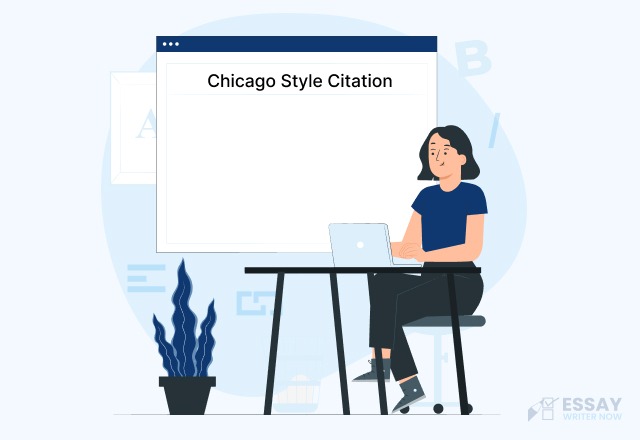What is an ASA Format?
The ASA citation format is a standardized way to format papers in the social sciences. It is managed and updated by the American Association of Sociologists. This citation style has its own rules for citing sources, paper format, footnotes, references, and bibliography.
When using the ASA citation format, it is important to know how the different parts of your paper are affected, such as
- Title page
- Abstract
- Heading format
- In-text citations
- Reference list
- Formatting specifics.
Using the ASA citation format correctly is important for your career. Using it incorrectly could discredit your work and make it harder for you to advance in your career.
ASA style is very similar to APA style. They both use parenthetical referencing, and all references are listed at the end of the paper in a section called "References”.
How to Cite in ASA Format?
The ASA format is a set of standards that help authors and students write papers in an academic style.
Below are a few ways you can use to cite your paper in the proper ASA format.
ASA Format Title Page
The title page is an essential component of every research paper. It should contain the following things:
- Student’s name
- Title of the research paper
- Total word count
- Running head
- Title footnote
- Address of the student
To make sure your paper is well-organized and has an appealing look, you should center align all the information in it. You can also try bolding titles of papers.
ASA Format Abstract
To create an abstract, make sure that you have a clear idea of what your paper will cover. A good way to summarize an entire paper in just a few short sentences is by including key points from each paragraph while also providing context for those reading who may not be familiar with your topic.
ASA Format In-Text Citation
To credit the sources of information, use this ASA citation format. In the ASA format, date and last names are added in parenthesis at the paraphrased or direct idea.
The following are some examples that give you a better idea of using the in-text citation format.
| Format | Example |
|---|---|
| Basic format includes the author's last name and the publication year | (Brown 2006) |
| When quoting, paraphrasing, or referring to specific passages | (Charlie 2008: 89) |
| When author’s name is included | Brown (2017) |
| Referring to two authors of the same text | (John and Eaton 2002) |
| Resource has more than three authors | (John, Brooks, and Eaton 2006); (john et al. 2006) |
| Referring to more than one source in the same citation | (Brooks 2003:89; John 2015:78) |
| Same author work published in the same year | (John 2008a; 2008b) |
Citations are a way of crediting the authors of information that you use. They allow you to give accurate information about where the information came from.
It is important to use citations properly so that people can find the original sources of information.
ASA Format Heading and Subheadings
An ASA-style paper has headings and subheadings. The main headings should be in capital letters and the subheadings in italics.
Subheadings help organize your content so that it is easier for readers to understand. The subheadings are used to organize body paragraphs.
The three different levels of subheadings in ASA are as follows:
- All letters in caps
- Not use bold letters
- Avoid make the introduction as heading
- Not use bold letters
- Use italic font
- The first letter of each word should be capitalized
- Only first letter of the subheading is capitalized
- Use italic font
- Indent the text at the start of the paragraph
ASA Format Tables/Figures
To make sure your readers can understand your tables and figures, it is important to give them sequential numbers (Table 1, Figure 2, etc.) and to place each table/figure on its own separate page at the end of your paper.
Each table/figure should have a descriptive title that tells the reader enough about it without needing any text from this point forward to explain further details than necessary.
ASA Format References
Include a reference page and list all the references in alphabetical order and by the author’s last name. The references should be double spaced.
The table below shows how to cite different types of sources in ASA format.
| Sources | Format | Example |
|---|---|---|
| Web Page | Author [Last, First]. Date of Publishing. Title. Publisher. Retrieved Month Day, Year {link}. | American Sociological Association 2007. “Status Committees.” Washington, DC: American Sociological Association. Retrieved April 22, 2007 . |
| Books | Author [Last, First]. Year of Publication. Title (italicized). Place of Publishing: Publisher. | Tulip, John Y., Jr. and Brown G. Grasmick. 2001. Neighborhoods and Crime: The Dimensions of Effective Community Control. New York: Lexington Books. |
| Magazine | Author Surname, Author Forename. Year Published. 'Title'. Publication Title, Pages Used. Retrieved October 10, 2013 (http://Website URL). | Feldman, John. 2017. 'Savage Inequalities'. Dollars & Sense, 385, 386. |
| E-Books | Author [Last, First]. Year of Publication. Title (italicized). Place of Publishing: Publisher. Retrieved Month Day, Year {link}. | Anon. 2001. Governor Brook's Instructions 25 April 1787 (UK) [Transcript -Rtf]. 1st ed. n.d.: n.d. Retrieved August 5, 2017 . |
| Journal Article | Author [Last, First]. Year of Publication. "Title (italicized).” Journal Name issue #: inclusive page numbers. | Kali, John., Bamboo. Ression, and Kim Harry. 2010. “Bad Jobs in America: Standard and Nonstandard Employment Relations and Job Quality in the United States.” American Sociological Review 65(2):256-78. |
| Book Chapter | Author Last name, First name. Year of publication. "Title of Chapter." Pp. numbers in Title of Book (italicized), edited by FI. | Brooks, James Glenn. 2011. “Crusading on the Vernacular Web: The Folk Beliefs and Practices of Online Spiritual Warfare.” Pp. 159-174 in Folklore and the Internet: Vernacular Expression in a Digital World, edited by T. J. Blank. Logan: Utah State University Press. |
| Newspaper Articles | Author Last name, First name. Year of publication. "Title of Article." Title of Newspaper (italicized), Month date. Retrieved Month date, year (URL). | Mickie, Lubna. 2002. “Advocate for Hispanics to Join President’s Top Aides.” Wall Street Journal, January 12, pp. A4, A12. |
| Conference Papers | Author Surname, Author Forename. Year Published. 'Title'. P. Pages Used in Publication Title. City: Publisher. Retrieved October 10, 2013 (http://Website URL). | Harry, Caroline. 2003. “Women’s Wisdom: Menarche Narratives and Body Politics.” Paper presented at the Northwest Anthropology Conference, March 27, Portland, OR. |
| Blog | Author (last name inverted). Year Published. “Title of the Blog”. Publication Title (italicized). | Wade, Lisa. 2011. “When Force is Hardest to Justify, Victims of Police Violence are Most Likely to be Black.” Sociological Images Blog, November 18. Retrieved December 9, 2003 |
| Podcasts | Broadcaster/author's name. Year. 'Programme title,' series title. Retrieved Day Month Year. | Commonplace Books. 2006. “Welcome to Night Vale.” Audio Podcast. Retrieved May 18, 2014 (http://commonplacebooks.com/). |
| Author Surname, Author Forename. Year Published. 'Title'. | Yule, Olivia. 2004. 'School Assignment'. | |
| Press Release | Anon. Year Published. Title. Retrieved October 10, 2013 (http://Website URL). | Google Inc.,. 2004. Retrieved October 16, 2014 . |
| Government Publication | Author Surname, Author Forename. Year Published. Title. City: Publisher. | Government of Western Africa,. 2002. Vegetation Buffers To Sensitive Water Resources. Perth: Department of Water. |
| Presentation or Lecture | Author Surname, Author Forename. Year Published. 'Title'. | Weber, Ryan, and Allen Brizee. 2013. 'Logical Fallacies'. |
| Patent | Author Surname, Author Forename. Year Published. 'Title'. | Alina, Dr. 2009. 'Doctor - Referenced Only In ABS Source - No Other Source Of His Name Given'. |
| ArtWork | Author Surname, Author Forename. Year Published. Title. City: Gallery. | Pope, Alexander. 1711. Poem. |
| Interview | Author Surname, Author Forename. Year Published. 'Title'. | Verheul, Tom. 2015. |
| Online Image or Video | Author Surname, Author Forename. Year Published. Title. Retrieved October 10, 2013 (http://Website URL). | Wikibooks,. 2018. Induced Fit Model And Lock And Key Model. Retrieved October 23, 2014 . |
| Software | Author Surname, Author Forename. Year Published. Title. City: Publisher. | Newell, Gabe. 2004. Half-Life 2. America: Valve. |
| Dissertation | Author Surname, Author Forename. Year Published. 'Title'. Level, Institution Name. | Vehkoo, Johanna. 2010. 'What Is Quality Journalism And How Can It Be Saved'. Ph.D, Oxford University. |
| Edited Book | Author Surname, Author Forename. Year Published. Title. City: Publisher. | Santrock, John W., Anne Mackenzie-Rivers, Tom Malcomson, and Kwan Ho Leung. 2011. Life-Span Development. 4th ed. McGraw-Hill Ryerson. |
| Encyclopedia Article | Author Surname, Author Forename. Year Published. 'Title'. Publication Title Pages Used. | Cottingham, J. 2003. 'The Meaning Of Life'. The Stanford Encyclopedia of Philosophy Ch 2.1 God Centred Views. |
| Court Case | Anon. Year Published. Title. | Anon. 1991. Wyatt Co (NZ) Ltd V Queenstown-Lakes District Council. |
ASA Format Footnotes and Endnotes
Footnotes and endnotes allow for expansion of information found in tables, citation with limited access to sources, or adding more detail within your text.
Footnotes are notes that appear near the material they are referencing. They are numbered in order, using Arabic numerals.
Endnotes are more common than footnotes. You should choose which type of note you will use and then use it consistently throughout your paper.
Each entry in your research paper should not be more than 100 words long. They are usually written at the end of the page where the reference is located. Endnotes are placed after the reference section with numbers.
ASA Format Bibliography
There is not a specific format that you must use to create a bibliography. However, you will need to create the bibliography separately from the references page.
ASA Format Examples
Below are some examples that will help you in formatting the paper in ASA format.
Tips for ASA Format
The following are some tips for writing the paper in ASA format.
- Include all sources used in your research in the reference list.
- Use quotation marks for short quotations and italics for titles of books and periodicals.
- Create a separate title page with the full title, authors' names, and any relevant course information.
- Number tables and figures consecutively (e.g., Table 1, Figure 1).
- Omit the word "Introduction" at the beginning of your paper.
- Create a separate reference page with all sources listed in ASA format and double-spaced.
- List citations from the same author in chronological order.
- Place tables and figures in a separate section or page.
- Include all main sections in the manuscript (abstract, introduction, methods, results, discussion, conclusion).
- Number footnotes/endnotes consecutively throughout the paper using Arabic numerals.
- Use in-text citations with author and publication year in parentheses.
- Format headings consistently for each level.
- Ensure all text is relevant to the topic.
In conclusion, the ASA format is a common citation style used by researchers and students to cite their sources. This format is not easy, but you can easily format your paper with these tips and tricks.
However, if you need help with your academic assignments, then get in touch with an expert essay writing service.







